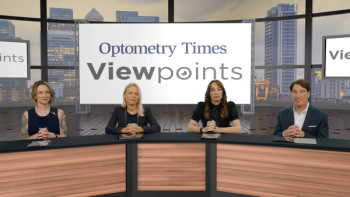
Study: Long-term blood pressure variability and visual field progression in glaucoma
A retrospective cohort study was designed to provide further information on the association between BP parameters and VF progression over time.
A newly published study1 reported that higher mean blood pressure (BP) levels and higher standard deviation (SD) of BP are associated with faster progression of visual field (VF) defects in patients with
Vincent Q. Pham, BS, and colleagues from the Viterbi Family Department of Ophthalmology, Hamilton Glaucoma Center, Shiley Eye Institute, University of California, San Diego, La Jolla, CA, reported their results in JAMA Ophthalmology.
They pointed out that the association between blood pressure (BP) and glaucoma progression has been studied previously.2,3 Impaired autoregulation of the vasculature, especially in the optic nerve head, was proposed as a key risk factor for glaucomatous progression.4 However, it remains uncertain whether these vascular changes are a cause or a consequence of glaucoma, they commented.
Blood pressure study and findings
This was a retrospective cohort study designed to provide further information on the association between BP parameters and VF progression over time. The study included patients with suspected or confirmed glaucoma who had been part of the Diagnostic Innovations in Glaucoma Study and the African Descent and Glaucoma Evaluation Study. BP and VF testing was performed from November 2000 to December 2022.
The main outcome measures were the mean and SD values of the systolic and diastolic arterial pressures, which were incorporated into multivariable mixed-effect models to look at association between BP parameters and mean intraocular pressure (IOP) with rates of VF mean deviation loss. The BP parameters, including the mean arterial pressure (MAP), systolic arterial pressure (SAP), and diastolic arterial pressure (DAP) were analyzed, according to the authors, in 3 separate models each incorporating their mean values and SDs. Two-way interaction terms and 3-way interaction terms for each combination of the mean BP, SD of the BP, and the mean IOP were included in the multivariable analysis.
The cohort included 1,674 eyes of 985 patients (mean age, 61.2 years).
The investigators reported that the mean change in the VF mean deviation was −0.13 (95% confidence interval [CI], −0.16 to −0.10) decibels (dB) annually over a mean follow-up of 8.0 years.
The interaction terms of higher mean BP and higher SD of the BP were associated with faster annual mean deviation changes for the MAP (0.02; 95% CI, 0.01-0.04 dB annually per 1-mm Hg higher; P = 0.001) and DAP (0.02; 95% CI, 0.01-0.03 dB annually per 1-mm Hg higher; P < 0.001). The interaction term of the higher SD of the BP and higher mean IOP was associated with faster annual mean deviation changes for the MAP (0.01; 95% CI, 0.00-0.02 μm per 1-mm Hg higher; P = 0.003) and DAP (0.01; 95% CI, 0.00-0.01 μm per 1-mm Hg higher; P = 0.001).
The authors concluded, “In this cohort study, the higher mean BP and higher SD of blood pressure were associated with faster VF progression. These findings suggest that long-term variability of the BP may be a modifier of the association between the IOP and VF progression in glaucoma.”
References:
Pham VQ, Nishida T, Moghimi S, et al.Long-term blood pressure variability and visual field progression in glaucoma. JAMA Ophthalmol. Published online November 14, 2024. doi:10.1001/jamaophthalmol.2024.4868
Mohammadzadeh V, Su E, Mohammadi M, et al. Association of blood pressure with rates of macular ganglion cell complex thinning in patients with glaucoma. JAMA Ophthalmol. 2023;141:251-257. doi:
10.1001/jamaophthalmol.2022.6092 Jammal AA, Berchuck SI, Mariottoni EB, et al. Blood pressure and glaucomatous progression in a large clinical population. Ophthalmology. 2022;129:161-170. doi:
10.1016/j.ophtha.2021.08.021 Leung DYL, Tham CC. Normal-tension glaucoma: current concepts and approaches-A review. Clin Exp Ophthalmol. 2022;50:247-259. doi:
10.1111/ceo.14043
Newsletter
Want more insights like this? Subscribe to Optometry Times and get clinical pearls and practice tips delivered straight to your inbox.








































